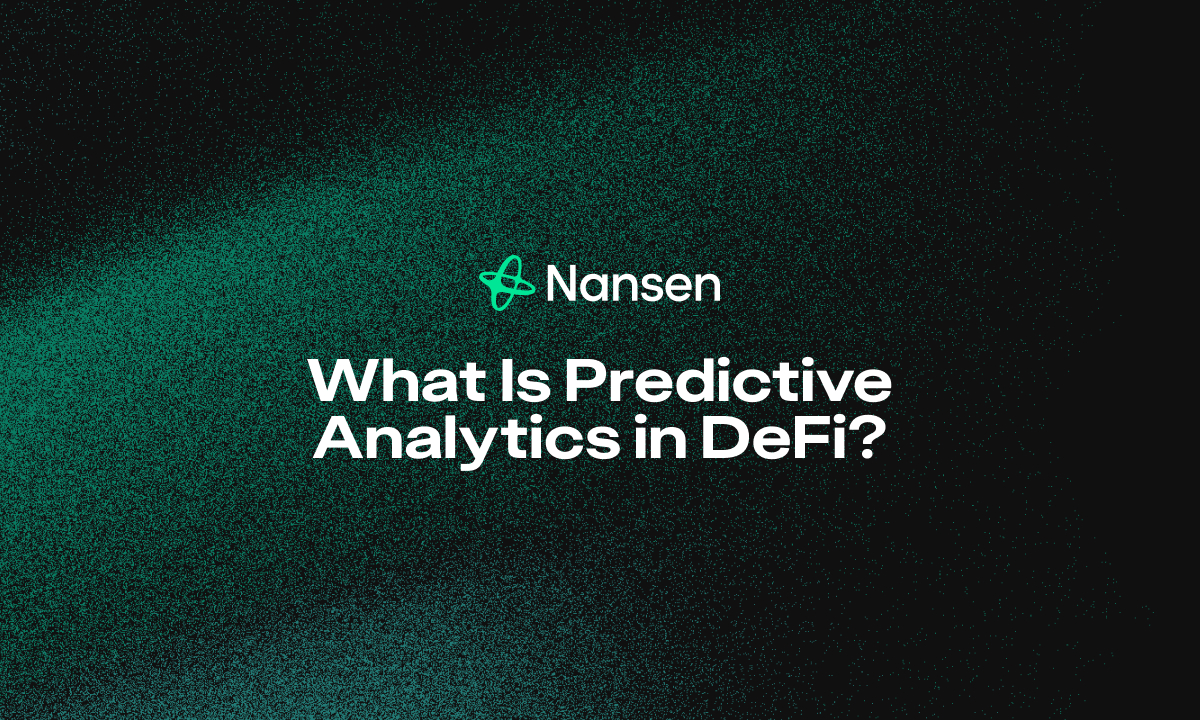Predictive analytics in DeFi combines data science, blockchain analytics, and machine learning to forecast trends and behaviors within decentralized finance platforms. Unlike traditional finance, which relies heavily on centralized data sources, DeFi predictive modeling draws from transparent, onchain data to help investors and protocol developers make better-informed decisions.
For crypto investors in their mid-twenties to mid-thirties, understanding these analytical tools isn't just nice-to-have — it's becoming essential for navigating the complexity of decentralized markets.
Key takeaway: Predictive analytics applies data science techniques to blockchain data, helping investors anticipate market movements rather than just react to them.
How DeFi Analytics Differs from Traditional Finance
DeFi data science differs from traditional financial analysis in several important ways:
- Transparency: All transactions exist on public blockchains
- 24/7 markets: No closing bell means continuous data generation
- Smart contract interactions: Analytics must account for automated, code-based financial actions
- Composability: DeFi protocols interact with each other, creating complex data relationships
This unique environment creates both challenges and opportunities for predictive models. The transparency of blockchain data provides unprecedented access to transaction information, but the complexity of interacting protocols demands sophisticated analytical approaches.
Core Components of DeFi Predictive Analytics
1. Onchain Data Analysis
The foundation of DeFi analytics begins with blockchain data. Every transaction, swap, deposit, and withdrawal leaves a permanent record that analysts can examine. Modern DeFi data platforms aggregate this information, creating usable datasets from what would otherwise be overwhelming amounts of raw data.
Key takeaway: Onchain analysis transforms transparent but complex blockchain data into actionable intelligence.
2. Machine Learning in DeFi
Machine learning algorithms excel at identifying patterns in large datasets—exactly what's needed for DeFi prediction. These systems can:
- Detect anomalies that might indicate security vulnerabilities
- Forecast price movements based on historical patterns
- Predict liquidity shifts across protocols
- Identify optimal entry and exit points for yield farming
The application of machine learning in DeFi is still developing, but already platforms like Gauntlet and Dune Analytics offer sophisticated tools that were unavailable just a few years ago.
3. Smart Contract Analytics
Smart contracts are the building blocks of DeFi, and analyzing their behavior is crucial for risk assessment. Predictive tools can:
- Simulate contract interactions under various market conditions
- Identify potential exploits before they occur
- Model economic incentives to predict user behavior
- Estimate gas costs during different network conditions
Projects focused on smart contract analytics help investors understand the underlying mechanisms of protocols before committing their funds.
Practical Applications for DeFi Investors
Risk Assessment and Management
DeFi risk assessment tools help investors understand potential downsides before they occur. By analyzing historical data and simulating various scenarios, these tools can provide early warnings about:
- Impermanent loss probability in liquidity pools
- Collateralization risks in lending protocols
- Governance attack vectors
- Smart contract vulnerabilities
Several platforms now offer risk scoring for different protocols, making it easier to compare options based on more than just advertised APY.
Yield Farming Optimization
For yield farmers, predictive analytics can significantly improve returns. Instead of chasing yesterday's highest yields, optimization tools help investors:
- Predict which pools will maintain profitability
- Account for token price volatility in APY calculations
- Balance rewards against impermanent loss risk
- Time entry and exit to maximize returns
Key takeaway: Yield optimization tools transform farming from guesswork to a data-driven strategy.
Algorithmic Trading in DeFi
Algorithmic trading has found a natural home in DeFi markets. Using predictive models, these systems can:
- Execute trades based on forecasted price movements
- Maintain optimal positions in automated market makers
- Arbitrage price differences across decentralized exchanges
- Automate liquidity management strategies
For individual investors, even simple prediction-based automation can reduce emotional decision-making and improve long-term results.
The Future of Predictive Analytics in Decentralized Finance
DeFi predictive analytics is entering a new phase of development. As more historical data becomes available and machine learning techniques improve, we can expect:
- More accurate forecasting of crypto transaction patterns
- Better integration between off-chain and on-chain data
- Democratized access to institutional-grade analytical tools
- Protocol-specific prediction markets
Key takeaway: The field is moving from descriptive analytics (what happened) to truly predictive and prescriptive analytics (what will happen and what you should do about it).
Common Questions About DeFi Predictive Analytics
How does predictive analytics improve DeFi protocols?
Beyond helping investors, analytics provides protocol developers with insights about user behavior, helping them design better tokenomics, improve security, and optimize parameters like interest rates and collateralization ratios.
What are the main benefits of predictive analytics in decentralized finance?
The primary benefits include reduced risk through early warning systems, improved returns through optimization, and better capital efficiency through anticipatory positioning.
Which DeFi platforms use predictive analytics?
Many leading platforms now incorporate predictive elements, including Aave's interest rate models, Compound's liquidation risk indicators, and dYdX's market forecasting tools.
How is machine learning applied in DeFi for risk forecasting?
Machine learning models analyze historical patterns of liquidations, defaults, and market movements to estimate the probability of similar events occurring in the future, helping investors set appropriate stop-losses and collateralization levels.
Important disclaimer: While predictive analytics offers powerful tools for DeFi investors, no model can guarantee future results. The decentralized finance space remains highly experimental, and even the best analytics cannot eliminate all risks. Always research thoroughly and invest only what you can afford to lose.




